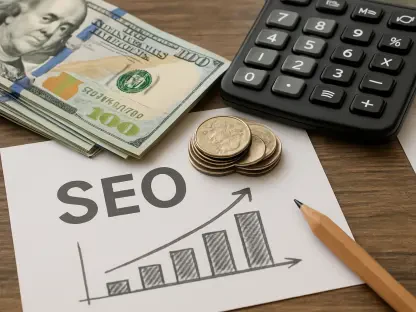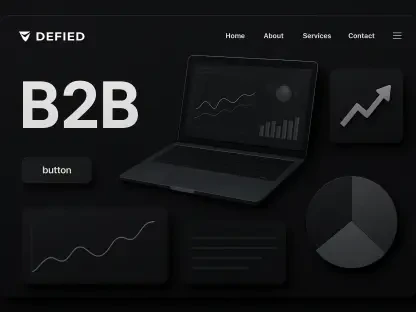This guide aims to equip business owners and signage professionals with actionable strategies to leverage the transformative power of outdoor signage in driving growth and engagement. Picture a bustling city street where a small boutique’s culturally inspired sign not only draws in curious passersby but also sparks a flurry of social media posts, amplifying its reach far beyond the physical location. In today’s competitive market, outdoor signage has evolved from mere markers of presence to dynamic tools that shape customer perceptions and influence business outcomes. This comprehensive resource explores how five key shifts—personalization, technology integration, sustainability, multi-functionality, and context-driven design—can redefine marketing approaches and position businesses for success. By following the outlined steps, readers will learn to harness signage as a strategic asset, ultimately boosting visibility, customer connection, and return on investment.
The purpose of this guide lies in addressing the critical need for businesses to adapt to evolving consumer expectations and technological advancements through innovative signage solutions. Far beyond static advertisements, modern signs serve as platforms for storytelling and interaction, capable of creating lasting impressions in a crowded marketplace. With foot traffic and digital engagement often hinging on first impressions, understanding how to implement cutting-edge signage strategies becomes essential for staying relevant. This resource provides a clear roadmap for transforming traditional signs into powerful business tools, offering insights that apply across sectors like retail, hospitality, and nonprofit organizations.
Moreover, the importance of staying ahead in this rapidly changing landscape cannot be overstated. Businesses that fail to embrace these shifts risk falling behind competitors who use signage to captivate audiences and build loyalty. From eco-conscious designs that resonate with environmentally aware consumers to digital displays that update promotions in real-time, the potential for impact is immense. This guide serves as a foundation for rethinking signage investments, ensuring they align with broader business goals and deliver measurable value.
The New Era of Outdoor Signage: A Game-Changer for Businesses
Outdoor signage has entered a transformative phase, shifting from basic visibility aids to integral components of business strategy. No longer just about displaying a name or logo, signs now play a pivotal role in storytelling, marketing, and customer engagement. For instance, a well-designed sign can increase foot traffic by catching the eye of potential customers, while a unique mural might inspire social media shares, extending a brand’s reach organically.
This evolution reflects a broader trend where signage becomes a canvas for emotional connection and brand identity. Businesses are witnessing tangible results, such as higher store visits or amplified online buzz, by leveraging signs that resonate with their target audience. The impact is clear: signage is no longer an afterthought but a driver of growth and interaction in competitive markets.
Five major shifts—personalization, technology integration, sustainability, multi-functionality, and context-driven design—are at the heart of this revolution. These elements redefine how signs contribute to business success, offering opportunities to stand out in diverse environments. By understanding and adopting these changes, companies can turn a simple sign into a powerful tool for achieving long-term objectives.
The Evolution of Signage: From Static Markers to Strategic Assets
Historically, outdoor signage served a straightforward purpose: to mark a location or advertise a service with minimal flair. Early signs were often static, one-dimensional, and focused solely on conveying basic information to passersby. Over time, however, the role of signage has expanded dramatically, aligning more closely with sophisticated business goals and consumer expectations.
Today, signs are viewed as strategic assets that must deliver measurable outcomes, such as increased sales or enhanced brand recognition. This shift stems from a growing demand for value, where every element of a business’s presence is expected to contribute to its bottom line. Modern signage incorporates design, technology, and purpose to create impactful impressions that go beyond mere visibility.
For sign companies, this evolution presents a unique opportunity to transition from traditional fabricators to strategic partners. By offering solutions that address branding, engagement, and functionality, these firms can help businesses achieve their objectives. The focus has moved toward collaboration, ensuring that signage aligns with broader marketing strategies and delivers consistent, meaningful results.
Key Shifts Redefining Outdoor Signage for Business Growth
This section outlines five transformative shifts in outdoor signage, providing a step-by-step approach to implementing these strategies for business growth. Each shift is detailed with practical insights and examples to guide effective adoption.
Shift 1: Personalization for Emotional Connections
Crafting Authentic Brand Narratives
Identify Core Brand Values: Begin by pinpointing the unique elements of a business’s identity, such as its mission, history, or community ties. This step ensures that the signage reflects an authentic story, creating a memorable impression on customers. For example, a local cafe might highlight its family-owned roots through vintage-style lettering.
Design with Emotional Impact: Use colors, fonts, and imagery that evoke specific feelings aligned with the brand’s ethos. A playful design might suit a children’s store, while elegant typography could elevate a luxury boutique. Tailoring these elements fosters loyalty by making customers feel connected to the business’s narrative.
Boosting Visibility Through Social Sharing
Create Share-Worthy Designs: Develop signage with visually striking or culturally relevant features that encourage customers to take photos and post them online. A mural inspired by local heritage, for instance, can become a social media hotspot, expanding the brand’s digital footprint without additional cost.
Incorporate Interactive Elements: Add subtle prompts, like hashtags or photo-friendly backdrops, to inspire engagement. When customers share their experiences, the signage acts as free advertising, reaching broader audiences. This approach turns a physical sign into a viral marketing tool.
Shift 2: Technology Integration for Interactive Engagement
Real-Time Promotions with Digital Displays
Adopt Digital Signage Solutions: Invest in LED panels or digital screens to display promotions that can be updated instantly. This flexibility ensures content remains relevant, such as showcasing daily specials at a restaurant. Timely updates keep customers informed and engaged with current offers.
Test and Optimize Content: Experiment with different messages or visuals to determine what resonates most with the audience. Analytics from digital platforms can reveal which promotions drive the most traffic, allowing businesses to refine their approach continuously for maximum impact.
Measuring Impact with Digital Tools
Integrate Trackable Features: Embed QR codes or scannable links on signs to connect customers to online content, such as menus or loyalty programs. These tools provide data on engagement levels, offering concrete evidence of the signage’s effectiveness in driving interactions.
Analyze Performance Metrics: Regularly review data from scans and clicks to assess the return on investment. This information helps justify signage expenses by demonstrating clear links between customer actions and business outcomes, paving the way for informed future decisions.
Shift 3: Sustainability as a Competitive Edge
Appealing to Eco-Conscious Customers
Choose Green Materials: Opt for signage made from recycled content or low-impact paints to align with environmental values. Such choices signal a commitment to sustainability, resonating with consumers who prioritize eco-friendly businesses, thereby enhancing brand perception.
Communicate Eco Efforts: Highlight sustainable practices through signage design or accompanying messaging. A small note about energy-efficient LEDs, for example, can educate customers about the business’s environmental responsibility, building trust and preference among green-minded individuals.
Long-Term Savings with Durable Materials
Invest in Long-Lasting Options: Select durable composites or weather-resistant materials to reduce replacement frequency. While initial costs may be higher, the longevity of these signs cuts down on maintenance expenses, benefiting both the business and the sign provider financially.
Plan for Energy Efficiency: Incorporate LED lighting over traditional bulbs to lower energy consumption. This not only reduces operational costs over time but also aligns with sustainability goals, offering a dual advantage of savings and positive public image.
Shift 4: Multi-Functionality for Maximum ROI
Combining Utility with Branding
Design for Dual Purposes: Create signs that serve practical functions, like navigation, while reinforcing brand identity. A hospital sign, for instance, can guide visitors to departments and simultaneously display the institution’s logo, blending utility with consistent branding.
Prioritize Clear Messaging: Ensure that multiple functions do not compromise clarity. Use distinct sections or layouts to separate directional cues from promotional content, maintaining a cohesive look that addresses diverse needs without confusing the viewer.
Enhancing Customer Experience Through Versatility
Adapt Signs to Varied Roles: Develop signage that can shift between purposes, such as A-frames used for daily deals and event announcements. This adaptability ensures the sign remains relevant across different campaigns, enhancing customer interactions at every touchpoint.
Focus on Seamless Integration: Design multi-functional signs to fit naturally within the customer journey, whether guiding foot traffic or prompting online engagement. A well-thought-out sign can create a fluid experience, making interactions with the business more intuitive and enjoyable.
Shift 5: Context-Driven Design for Relevance and Compliance
Adapting to Local Aesthetics and Rules
Research Local Guidelines: Before designing, investigate zoning laws and aesthetic standards specific to the area. Compliance with regulations in historic districts or suburban zones prevents costly redesigns, ensuring the signage fits seamlessly into its surroundings.
Reflect Community Character: Tailor designs to match the local environment, using traditional fonts for heritage areas or bold colors for urban retail hubs. This alignment with context makes the signage more relatable and acceptable to the community, avoiding potential conflicts.
Balancing Creativity with Practicality
Consult on Functional Needs: Work closely with businesses to balance innovative ideas with practical requirements, such as visibility or durability. Sign companies can act as advisors, ensuring designs are both imaginative and feasible for the intended location and purpose.
Iterate Based on Feedback: Test initial designs with stakeholders to refine elements that may clash with local norms or business goals. This iterative process guarantees that the final signage strikes a balance between creative expression and real-world applicability.
Core Takeaways: Harnessing Signage for Strategic Impact
- Personalization builds emotional connections and boosts brand visibility through tailored designs.
- Technology creates interactive, measurable engagement with customers via digital tools like QR codes.
- Sustainability appeals to eco-conscious consumers and reduces costs with durable, green materials.
- Multi-functionality maximizes ROI by serving diverse business needs, from branding to navigation.
- Context-driven design ensures relevance and compliance across varied environments and regulations.
The Broader Impact: Signage Trends and Future Challenges
The shifts in outdoor signage reflect wider industry trends that affect sectors ranging from retail to hospitality and nonprofits. Personalization and technology, for instance, cater to the retail sector’s need for standout branding, while sustainability resonates strongly with hospitality businesses aiming to project a responsible image. These transformations are not isolated but part of a holistic movement toward innovation and adaptability in business tools.
Looking ahead, advancements in digital integration, such as augmented reality experiences, are expected to deepen customer interactions further. At the same time, stricter environmental standards may push for even greener materials and practices in the coming years, starting from 2025 onward. These developments signal a future where signage continues to evolve as a critical element of strategic planning across industries.
However, challenges like balancing innovation with affordability remain significant. Businesses and sign companies must navigate the tension between cutting-edge solutions and budget constraints, ensuring accessibility without compromising impact. As strategic partners, sign providers play a growing role in addressing these hurdles, helping clients adapt to an ever-changing landscape through tailored, value-driven services.
Final Thoughts: Embracing Signage as a Growth Tool
Reflecting on the journey through this guide, it becomes evident that outdoor signage has shifted from a peripheral expense to a central pillar of business strategy. Each step, from personalizing designs to integrating technology and ensuring sustainability, has laid the groundwork for transforming how businesses connect with their audiences. The process has highlighted the immense potential of signs to drive foot traffic, engagement, and loyalty when approached with intention and innovation.
Moving forward, businesses should consider partnering with forward-thinking sign companies to explore customized solutions that align with these transformative shifts. Exploring options like brand discovery sessions or eco-friendly design packages could unlock new avenues for growth. Additionally, staying informed about emerging trends, such as advanced digital integrations, will ensure that signage strategies remain competitive in dynamic markets.
As a next step, evaluating current signage for alignment with these principles—personalization, technology, sustainability, multi-functionality, and context—offers a practical starting point. Identifying gaps and planning upgrades based on specific business needs could yield significant returns. Ultimately, viewing signage as an ongoing investment rather than a one-time cost has proven to be the key to sustained success in an increasingly visual and interactive world.









